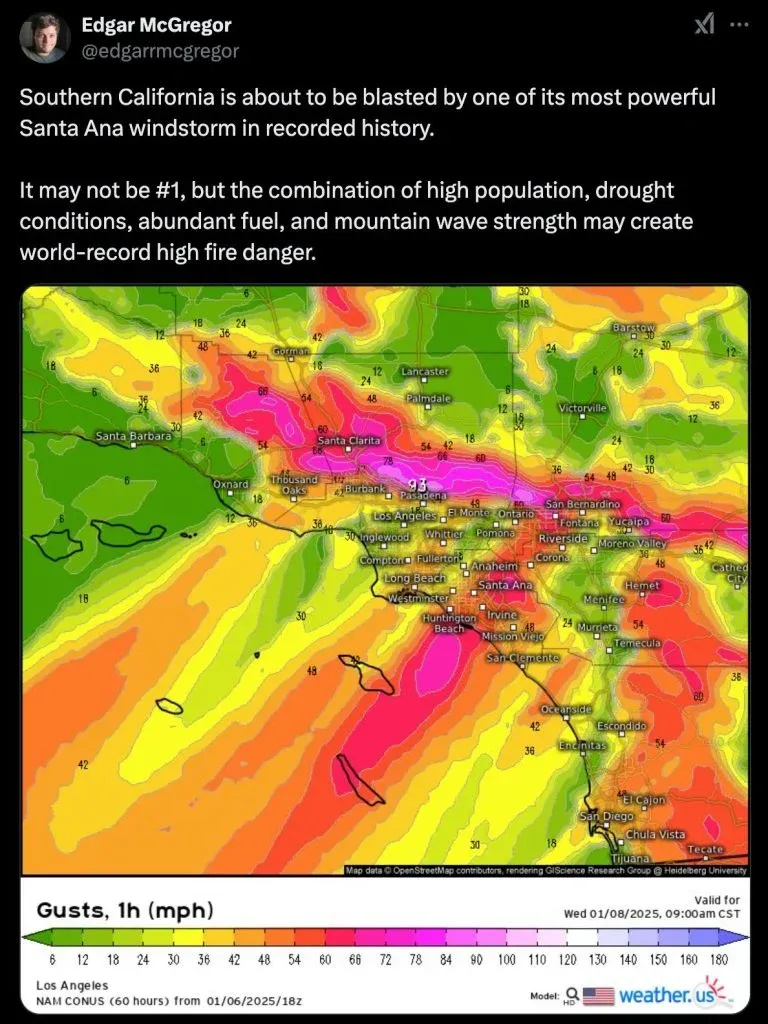
After years of fire and smoke in rural Northern California—evacuations, death and destruction, broken communities, lost homes—watching Los Angeles burn feels surreal but inevitable. This could have been avoided, but we knew it was coming.
Source: Why Los Angeles Is Burning
Many are quick to jump on the global warming bandwagon when looking for a cause. However, an honest look at the situation doesn't really lead to that conclusion. This article lists a number of causes, all of which are related to poor (or even criminal) government decisions. I'll summarize a few of them here.
First off, there's nothing particularly exceptional about the current climate in the Los Angeles area. In that part of the world, the climate is somewhat cyclical with years of excess rain and other years of extreme drought. This is not unusual or new and does not represent a change. One of the ways that the Los Angeles area handled this in the past was to build water reservoirs. This allows water from wet periods to be stored for use during dry periods. However, the last time a new reservoir was built was in the 1970s. Since then the population has nearly doubled so as you could imagine, water usage has increased by a significant amount as well making water more and more scarce as the years go by.
So why haven't any new reservoirs been built? That's a good question since voters approved proposition 1 in 2014 funding a $7.5 billion bond to construct new water reservoirs and dams with a deadline of January 1, 2022. Guess how many new reservoirs have been built? Perhaps asking where the money went is an even better question. Climate change or no climate change, insufficient reservoirs mean that not enough water is going to be available even without the addition of fires.
To make matters even worse, California spent millions of dollars removing existing infrastructure including Klamath Dam and upcoming soon, Scott Dam. Removing these water sources make naturally occurring wildfires impossible to fight.
For some reason, California also seems to be anti-forest management. Wildfires are a natural part of the lifecycle of a forest. California, for obvious reasons, aggressively extinguishes wildfires. However, they don't do something commonly done in other places which is controlled burns. Controlled burns help to reduce excessive underbrush that would normally be reduced by natural fires. As this underbrush builds up, it increases risk for larger more extreme fires.
Weather that leads to higher fire risk (dry weather combined with high winds) is also very predictable. Los Angeles new that fire risk was going to be running high yet there was no water available in the existing fire hydrants. Why are they even there?
There are several other contributing factors discussed in the article linked above, however, a normally dry and windy time of year combined with insufficient water supplies and poor land management is quite enough of a recipe for disaster.
